If you find holes in your cotton clothing, don't automatically assume moths are responsible for it. Most insects prefer animal fibers to vegetable fibers, especially moths. While holes in cotton items are more likely to come from improper care, there are some insects that will devour fibers indiscriminately.
Types of Clothing Eating Moths
Moths themselves do not eat clothing. A female moth flutters about and finds a spot suitable to lay eggs. When those eggs hatch, the larvae, or caterpillars, of the moths devour clothing. There are only two types of moth larvae that have the ability to digest the fibers that clothing is made from.
Types of Moths
Tineola bisselliella, commonly called the webbing clothes moth, is the most recognized moth for destroying clothing. These moths are generally 1 to 2 inches wide, and light golden brown in color. Unlike most moths, webbing clothes moths do not like light, and will often hide in closets, undiscovered until a piece of clothing is damaged. The larva of the webbing moth are easy to identify as they are shiny and white with a darker head. Tinea pellionella, or the casemaking clothes moth, looks similar to the webbing clothes moth. It is darker and usually has spots on its wings. Much like its relative, this type of clothing moth does not like light and is rarely seen unless disturbed. Casemaking clothes moth larvae are harder to identify. When a casemaking moth larva is disturbed, it curls up into the case it weaves, blending in with the fabric it is attached to.
Do Moths Eat Cotton Clothing?
Moth larvae generally only feed of fibers that are of animal origin, wool, silk, cashmere, angora and similar. Cotton is a vegetable-based fiber and is usually safe from the ravaging mouths of moth larvae. The casemaking clothes moth will sometimes use cotton fibers to cocoon themselves when nothing else is available. Both moths will feed upon cotton clothing if it is blended with an animal fiber.
Bugs that Commonly Eat Cotton
Carpet beetles of the family Dermestidae are responsible for most damage to cotton or synthetic clothing. The larvae of these beetles have a voracious appetite, and will subsist on anything available, even dryer lint. Carpet beetle larvae can survive for weeks without any food source at all, and they are extremely persistent unless you use chemical means to eliminate them.
Getting Rid of Carpet Beetles
Any items that are infested with carpet beetles should be thrown out or destroyed. If this is not possible, freezing them for 48 hours is advised, or exposing them to temperatures above 120 degrees F for four or more hours is indicated. Clean your house or environment thoroughly, including all fibrous and non-fibrous surfaces. If you have a pet, pay special attention to areas where pet hair accumulates.
Related Articles
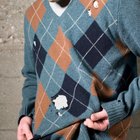
Worms That Eat Clothes

What Types of Insects Eat Leather?
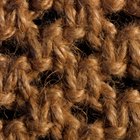
How to Kill Moths in Wool

Bugs That Get Into Pantry & Food

What Are Some Absorbent Fabrics for ...
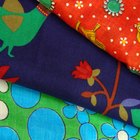
What Is Arnel Vintage Material Fabric?

Properties of Cotton Fabric

How to Store Clothes in Cardboard Boxes

Does Bird Seed go Bad?
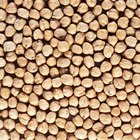
How to Know When Sprouted Garbanzo ...

Uses for Mothballs

How to Identify Grain Beetles
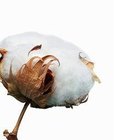
How Does Cotton Help Insulate?

Care of Mohair Fabric

Cashmere Vs. Viscose

Should You Steam or Blanch Bean Sprouts ...

About Weevils

How to Get Rid of Bugs That Eat Holes ...

Advantages and Disadvantages of ...

How to Preserve Amino Acids in the ...
References
Writer Bio
Elizabeth Tumbarello has been writing since 2006, with her work appearing on various websites. She is an animal lover who volunteers with her local Humane Society. Tumbarello attended Hocking College and is pursuing her Associate of Applied Science in veterinary technology from San Juan College.